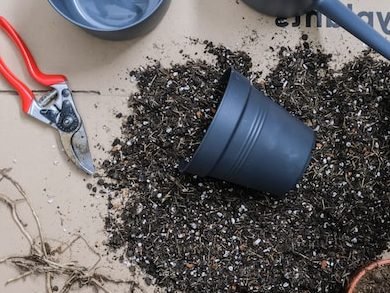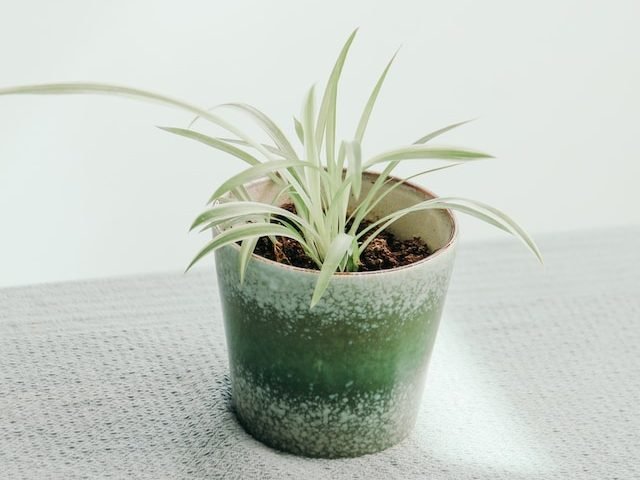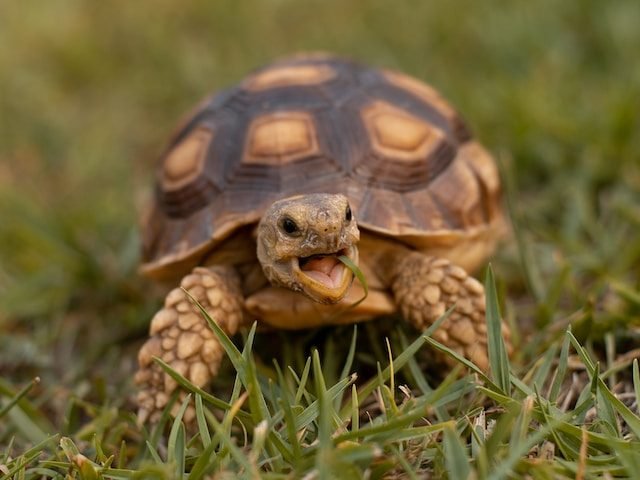
Although they might sound cute and cuddly, Bunny Ears Cacti are still houseplants you need to be careful of as their bristly hairs are sharp and cause irritation when touched. This is their in-built security system that stops them from being eaten or harmed. But the great thing about them is that they are super easy to multiply, which is good news for plant parents everywhere.
In this post, we will be showing you the best method to propagate your plant, including a detailed step by step, a list of things you’ll need as well as how to diagnose and fix any issues along the way. By the end, you’ll be fully equipped with all the information you need.
Why propagate a Bunny Ears Cactus?
Before we get into the step by step processes, we thought it would be important to go through the various reasons you might want to or even need to propagate them. Firstly, it’s a great way to expand your urban jungle without having to spend any more money! They also make great gifts for friends and family if you don’t have any more space for plants.
You might also need to do this out of necessity if you notice that it’s starting to wilt and die. We are always strong advocates of trying to figure out the issue and fixing it, but if nothing seems to change and your plant is unfortunately still dying, then propagating it might be the best option. You need to be sure that the pads you have chosen are still healthy. Plant cuttings are much more sensitive to disease or bacteria so the issue will get worse and probably kill your cutting pretty quickly.
What are the different methods you can use?
There is one main method to propagate Bunny Ears Cacti which does make it easy for plant parents who can’t decide which is the right method for them and their plant. They grow new pads as they mature which often come in pairs (hence the name) but can be removed individually and grown as new plants.
This method of removing pads does mean that your plant does need to be somewhat mature enough to have pads that you don’t mind removing. If your plant is still quite small and only has a few pads, then maybe wait a year or so before starting the process.
We will go over the pad cutting method in detail below to ensure you know what to do at each stage.
What tools/equipment will I need?
It’s important that you have all the right things to propagate your Bunny Ears Cactus before you take off the first pad cutting.
Healthy and mature Bunny Ears Cactus
Gardening gloves
Sharp scissors/shears/tweezers
Spare pot(s)
Fresh soil and water
Newspaper or plastic sheet if you’re propagating indoors
How to propagate a Bunny Ears Cactus using leaf pad cuttings
Luckily for parents across the world, the method using pad cuttings is pretty successful and also pretty simple to do once you know what the steps are.
Locate a healthy pad
Each of these individual pads can be used to create a new mother plant. When taking a pad cutting you want to make sure that the part of the plant you are using is healthy to give you any chance of success. Avoid any sign of disease, leaf rot or pests as these problems be transferred onto your new cuttings and amplified.
You can try to propagate pads that have naturally fallen off but you will have more success cutting leaves from the plant as chances are they will be healthier.
Make the cut *Make sure to wear gloves for this part!
We like to use tweezers to pull off a pad from the mother plant. You can also use shears and scissors to remove the pads. Make sure your tools are clean to avoid passing on any bad bacteria to your cutting. To increase your chances of success, we recommend cutting off several pads and going through the process with each of them at the same time.
Place your cuttings in potting mix
After a few days, grab a spare pot and fill it with fresh high-quality potting mix. Use a cactus/succulent specific potting mix as this will include ingredients such as perlite which helps with drainage and aeration. This is key as they are sensitive to leaf and root rot caused by soggy soil.
Whilst wearing gardening gloves, place the bottom of the pad into the potting mix so that about one-third of the pad is covered. This will help stabilise the pad and encourage the roots to grow.
Occasionally water your leaves
Bunny Ears Cacti don’t need much water so keep an eye on the moisture levels in the soil and water accordingly. You will want to water it slightly more than your mother plant as this will encourage root growth. It’s all about the right balance to avoid the pad becoming too soggy and rotting.
Be patient
Now all there is left to do is wait and occasionally add water and check in on your pad cuttings. It will take several weeks or even months for roots to start to grow. The most important thing is that you don’t try and check root growth every few days by pulling the cutting out to inspect it. This can damage the cutting and stop any future growth.
Enjoy your new Bunny Ears Cactus
It will take a while for you to see anything happening above the surface but as long as the pad cuttings still look healthy this is a good sign that your propagation has been a success. You’ll soon start to see some new leaves growing out from the top of the pads and before you know it you’ll have plenty of mature plants to care for.
Bunny Ears Cacti Propagation FAQs
The whole process can be a little scary as you are removing entire pads from your mother plant. However, with the right methods and knowledge, it should be a success. Below you can find all of the answers to your questions!
When’s the best time of year to propagate a Bunny Ears Cactus?
We recommend beginning in spring/early summer. This will give your pad cuttings plenty of warm sunny months for them to grow new roots and pads of their own.
Starting in autumn or winter will mean that your pad cuttings will be trying to grow in the dormant period and you won’t see much new growth. On top of colder temperatures, a small root system means the risk of leaf rot increases as the potting mix will stay soggy for longer.
Is it a good idea to use rooting powder when propagating a Bunny Ears Cactus?
Rooting hormone isn’t essential and you can have plenty of success without it, but it’s a great way to speed up the root growth. As you are moving the pads straight into potting mix, rooting powder is a great way to go. You simply dip the cutting in water and then into powder before potting. The water helps the powder stick to the cutting.
Can I use a grow light for my Bunny Ears Cactus cuttings?
Grow lights are great to use when you’re propagating a Bunny Ears Cactus and your home doesn’t get much natural light. Grow lights help to stimulate root growth as well as encourage new pads to grow.
LED lights can also support your more mature houseplants during autumn and winter when they won’t get as much light.
When can I start fertilising my Bunny Ears Cactus cuttings?
Fertilisation is one thing you really don’t need to worry about for quite a while. You don’t want to fertilise your pad cuttings until they are about 1 year old and are growing new pads of their own. Fertiliser can shock the young cuttings which can kill them or cause a range of issues.
If/when you do start to fertilise your new Bunny Ears Cacti, make sure you use a fertiliser that is specifically designed for cacti. A regular houseplant fertiliser will have the wrong balance of nutrients for your cacti.
Common problems when propagating a Bunny Ears Cactus
It can sometimes be a bit tricky as you are using individual pads which need to grow a whole new root system. But don’t think that if you encounter an issue along the way that your propagation is doomed. If you spot the issues early and know how to fix them, most of the time you’ll be able to bring your cutting back to full health.
Why isn’t my Bunny Ears Cactus cutting growing any roots?
It’s difficult to give an accurate timeline of root growth for Bunny Ears Cacti pads as it’s so unpredictable. The pad needs to grow a whole new root system before even thinking about growing new leaves. It will take several weeks and often months for the new root system to establish itself and new leaves to form. As long as your pad cutting looks healthy, there’s no reason why it won’t grow roots.
If you’re trying to do this when the temperatures in your home are quite cool then this may be the cause of the lack of root growth. You can help to speed up root growth by using a heat pad underneath your cuttings.
Why is my Bunny Ears Cactus pad cutting turning mushy?
If your pad cutting is mushy or shrivelled then this means it is starting to rot and has been overwatered. This is the most common reason why Bunny Ears Cactus propagation isn’t a success as they are very sensitive to it. We recommend trimming away the mushy or shrivelled parts of your cutting and hoping that it can still recover and grow roots.
In future, you want to make sure you are watering your cuttings less as well as using a high-quality well-draining potting mix with plenty of perlite.
Why are the new leaves on my cutting small?
Great news, your new cutting is finally growing new leaves, but how come they are much smaller than the leaves on my mother plant are? Luckily this is normal and is simply because the root system is still very small and can’t deliver enough moisture, energy and nutrients needed to grow such large leaves yet.
Give it time and slowly the pads on your Bunny Ears Cactus will mature and gradually get bigger!
That’s everything there is to know about propagating a Bunny Ears Cactus! Each process will be a little bit different as factors such as plant maturity, pad size, sunlight and water schedules will impact how your cuttings grow but with the right care, attention and environment your cuttings should grow into happy and healthy plants in no time. Trust us when we tell you that any stress is worth it in the end as these plants are incredible to see grow.
Check out our full Bunny Ears Cactus care guide to find all the information on how to continue to care for your cuttings once they have matured.















